In this article we will explore top 20 ways on how to make money from raising cattle.
Each section will provide insights into the potential revenue streams, market considerations, and strategies to maximize profitability.
Whether you’re a seasoned farmer looking to expand your operations or someone considering entering the world of cattle farming, this article will offer valuable guidance and ideas to help you make informed decisions and optimize your financial success.
So, let’s explore the top revenue streams through which you can generate income while nurturing and raising cows for a sustainable and profitable cattle farming venture.
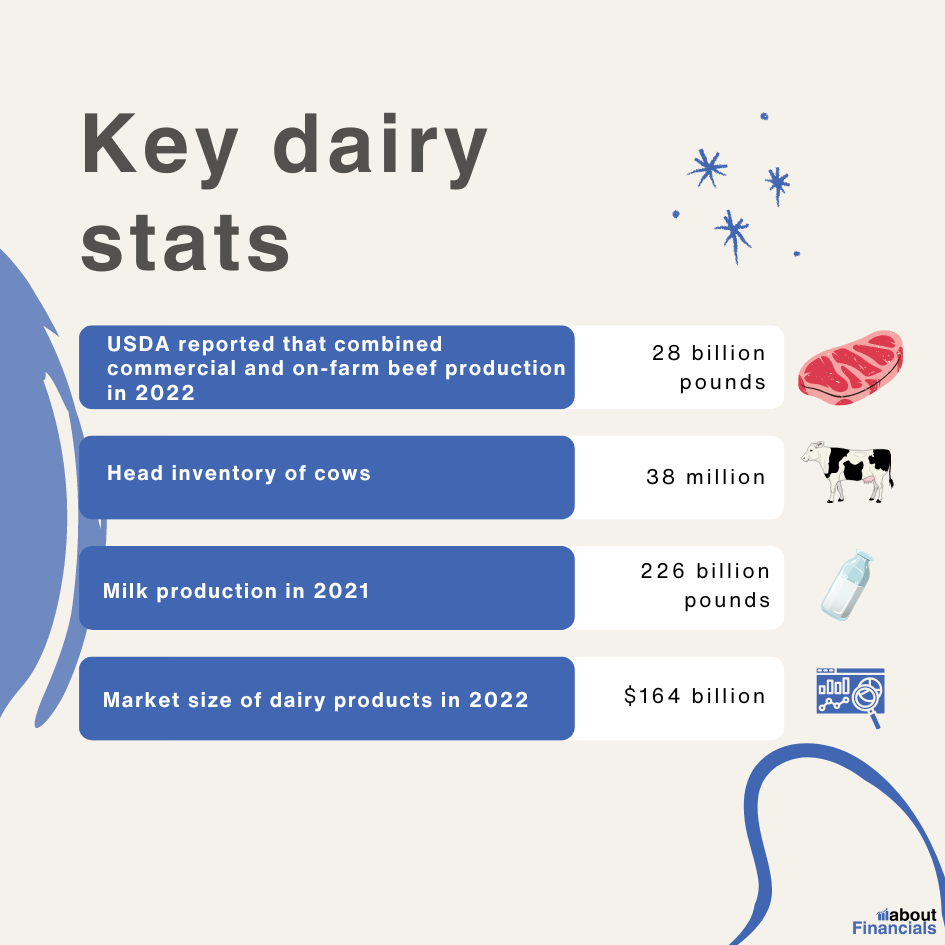
Make money from raising cattle – top 20 revenue streams
1. Milk production
At the heart of cattle farming lies the remarkable ability of cows to produce milk, a versatile and nutritious commodity sought after by consumers worldwide.
By implementing effective breeding programs, providing optimal nutrition, and ensuring proper herd management, you can unlock the full potential of your cows.
Through careful genetic selection, you can successfully develop a herd with exceptional milk yields. Moreover, focus on providing a well-balanced diet, consisting of quality forage and supplementary feed, to optimize milk production.
By prioritizing cow comfort and implementing modern milking techniques, such as automated milking systems, you can ensure a stress-free milking experience for their cows.
How much profit you can expect from 10 cows?
With a herd of 10 cows, each producing an average of 85 pounds of milk, a dairy farmer can generate $179 in daily revenue. This calculation is based on a milk price of $21 per hundredweight (cwt).
2. Value-added dairy products
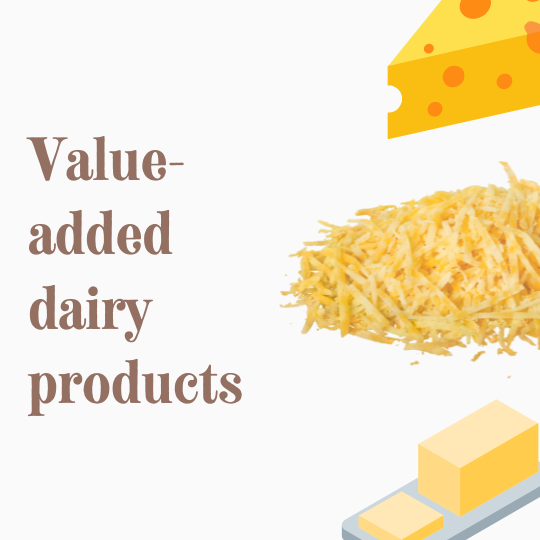
By transforming raw milk into a variety of delectable products like cheese, butter, yogurt, ice cream, and flavored milk, you can cater to diverse consumer preferences and capture a higher share of the market value.
Consider the example of Green Valley Creamery. They specialize in producing artisanal organic cheeses using traditional methods.
By sourcing high-quality milk from their own grass-fed cows, they create an exceptional range of cheeses, each with its unique flavor profile. From creamy Brie to tangy Cheddar, their artisan cheeses have gained a loyal following among gourmet food enthusiasts and have become sought-after products in local specialty stores and farmers markets.
3. Breeding and selling high-quality dairy cows
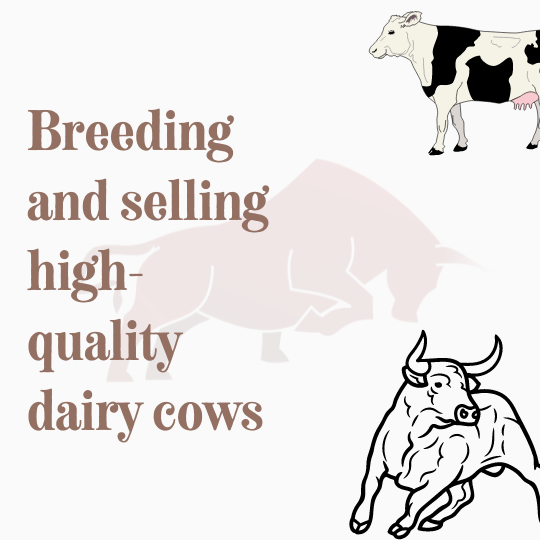
Breeding and selling high-quality dairy cows can be a profitable venture for cattle farmers.
By selectively breeding cows with desirable traits such as high milk production, excellent conformation, and superior genetics, you can cater to the needs of fellow farmers looking to enhance their herds.
There are many companies working in dairy genetics space.
Through meticulous breeding programs and a focus on superior genetics, they have developed a reputation for producing high-quality dairy cows that excel in milk production.
They regularly participate in prestigious livestock shows and auctions, showcasing their top-notch breeding stock. Farmers seeking to improve their herds flock to dairy genetics companies, knowing they can acquire cows that possess superior genetics, leading to increased milk production and overall herd performance.
4. Direct sales of dairy products
Cutting out the middleman and establishing direct sales channels can be a game-changer for dairy farmers.
By forging a personal connection with customers, you not only have the opportunity to share your farm’s story but also to command premium prices for your products.
Direct sales allow you to showcase the quality and freshness of your dairy products while fostering a sense of trust and loyalty among your customers.
Take the example of Johnson Family Dairy. With a charming farm store located on their property, they have created a welcoming space where customers can purchase a wide range of dairy products, including fresh milk, cheese, and yogurt. They also offer farm tours, allowing visitors to witness the milking process firsthand and learn about the care and dedication that goes into producing their high-quality dairy.
Through direct sales and a focus on exceptional customer service, Johnson Family Dairy has cultivated a dedicated customer base and established a strong brand presence in their local community.
5. Sale of beef cattle for meat production

While dairy farming often focuses on milk production, the sale of beef cattle for meat production is another avenue for revenue generation within the cattle industry.
Farmers can raise and sell cattle specifically bred for meat production, catering to the demand for high-quality beef in the market.
For example, Maplewood Farms specializes in raising Angus cattle, known for their marbled and flavorful meat. They carefully manage their cattle’s nutrition, ensuring they are raised on nutrient-rich pastures to produce top-quality beef. Maplewood Farms markets their beef directly to consumers through their farm store and online platforms, offering a farm-to-table experience that emphasizes the superior taste and traceability of their meat.
By focusing on beef cattle production, farmers can tap into the growing market for locally sourced, premium-quality beef. They establish direct connections with consumers who appreciate the transparency and ethical practices associated with smaller-scale farming operations.
Through strategic breeding, proper nutrition, and effective marketing, farmers can capitalize on the sale of beef cattle, diversifying their income and meeting the demands of consumers seeking high-quality, sustainably produced meat.
6. Sale of breeding stock
The sale of breeding stock, including bulls and heifers, opens up avenues for cattle farmers to not only generate income but also contribute to the growth and genetic improvement of other herds.
By offering carefully selected and well-bred animals, farmers play a crucial role in helping fellow farmers enhance their own herds’ productivity and genetic potential.
7. Sale of calves
Cattle farmers can capitalize on the sale of calves, whether for beef or dairy production.
By raising healthy and well-nurtured calves, farmers not only generate revenue but also support the growth and expansion of other farmers’ herds.
The sale of calves contributes to the overall vitality of the cattle industry.
8. Sale of cow manure as organic fertilizer
The value of cow manure extends beyond its traditional role. It can be transformed into a valuable resource for organic farming as nutrient-rich organic fertilizer.
By offering cow manure as organic fertilizer, cattle farmers contribute to sustainable agriculture practices while creating an additional revenue stream.
9. Wholesale distribution of dairy products
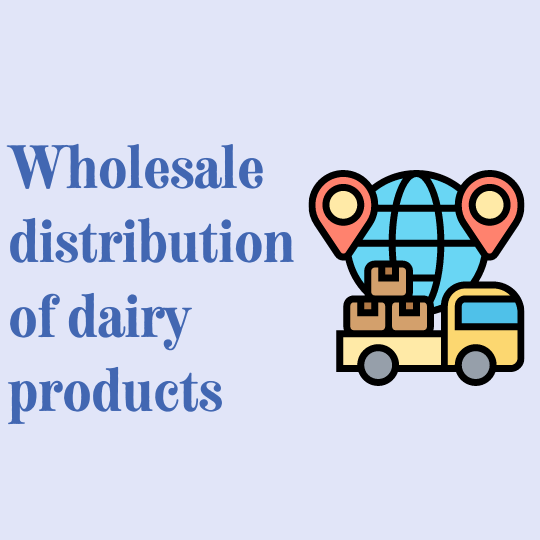
For those aiming to reach a broader customer base, wholesale distribution offers an avenue to supply retail stores, restaurants, and other establishments with your dairy products.
By partnering with these businesses, you can gain access to larger volume sales and potentially expand your market reach beyond local boundaries.
Consider the partnership between Blissful Farms and a regional supermarket chain. Blissful Farms, known for their organic milk and dairy products, has secured a wholesale distribution agreement with the supermarket chain.
Their products are now prominently displayed in the dairy section of each store, providing a convenient and trusted option for customers seeking high-quality dairy.
This wholesale partnership has not only increased Blissful Farms’ revenue but also elevated their brand visibility and awareness among a wider consumer audience.
10. Breeding services
Breeding services are a vital aspect of cattle farming, offering farmers the opportunity to enhance their herds and improve genetic traits.
By providing both artificial insemination (AI) and natural mating services, breeders can assist farmers in achieving their breeding goals and optimizing their herd’s performance.
Take, for instance, Oakridge Breeding Services, a trusted provider of breeding solutions. They offer a range of services to cater to different farmer needs.
Through AI, Oakridge Breeding Services utilizes advanced reproductive technologies to inseminate cows with carefully selected semen from superior sires. This helps farmers access the genetics of highly productive bulls and improve their herd’s genetic potential.
By providing comprehensive breeding services, you can assist farmers in achieving genetic progress, ultimately leading to improved milk production, enhanced traits, and overall herd advancement.
11. Cow leasing or boarding services
Cow leasing or boarding services provide an alternative revenue stream for cattle farmers with surplus facilities and resources.
By offering these services, farmers can provide care and accommodation for cows owned by others, earning income through leasing arrangements.
For instance, Green Meadows Cow Boarding is a reputable farm that provides cow boarding services to busy urban residents who are interested in owning cows but lack the necessary space or expertise. Green Meadows offers a safe and nurturing environment for these cows, taking responsibility for their daily care, feeding, and overall well-being.
Through a leasing agreement, individuals can have the satisfaction of owning a cow without the challenges of managing the entire farming operation. They benefit from fresh milk, while Green Meadows earns a steady income through the leasing arrangement.
By offering cow leasing or boarding services, farmers can utilize their infrastructure, maximize the use of their resources, and provide a valuable service to those who have an interest in agriculture but may not have the means to maintain their own herd.
12. Sale of compost from manure and bedding materials
Cattle farmers can further maximize the benefits of their manure management practices by producing and selling compost.
Composting combines manure with bedding materials and organic waste, resulting in a nutrient-rich soil amendment.
The sale of compost provides farmers with an opportunity to create a marketable product while promoting eco-friendly farming practices.
13. Sale of biogas produced from cow manure
Cow manure can be utilized to produce biogas through anaerobic digestion, a process that breaks down organic matter and captures the methane gas released.
The sale of biogas generated from cow manure offers an environmentally friendly energy source that can be utilized for various purposes, such as heating, electricity generation, or even vehicle fuel. This presents an innovative and sustainable way for cattle farmers to generate income while contributing to renewable energy production.
14. Sale of hides and skins

In the realm of livestock farming, the sale of hides and skins presents a unique opportunity to transform a natural byproduct into a valuable commodity.
The hides and skins of cattle, carefully removed during the meat processing stage, can be processed into leather, which is highly sought after for various applications such as footwear, furniture upholstery, and fashion accessories.
By partnering with reputable tanneries or leather manufacturers, cattle farmers can ensure that their hides and skins undergo proper processing and tanning to meet the quality standards of the market. This not only generates revenue but also contributes to the sustainable utilization of the entire animal, making the most of every resource.
15. Sale of tallow
Tallow, the rendered animal fat derived from cattle, has a range of applications beyond culinary uses.
It serves as a versatile ingredient in industries such as soap manufacturing, candle production, and cosmetics.
Tallow’s unique properties make it highly desirable for these purposes, providing a lucrative market for cattle farmers.
By investing in proper rendering equipment or partnering with rendering facilities, farmers can efficiently process the fat into tallow. This valuable product can then be sold to manufacturers who rely on tallow as a key ingredient in their production processes. Selling tallow not only adds value to the cattle farming business but also supports various industries that depend on this versatile and sustainable resource.
16. Sale of by-products for pet food or animal feed (bones, offal)
The by-products of cattle farming, such as bones and offal, can find a valuable second life in the pet food or animal feed industry.
These products contain essential nutrients and can be processed into nutritious ingredients for pet food formulations or used as feed supplements for livestock.
Working with reputable pet food manufacturers or animal feed suppliers, cattle farmers can create partnerships to ensure that these by-products are properly processed and transformed into high-quality nutritional additives. This allows farmers to monetize what would otherwise be considered waste, contributing to a circular economy approach while catering to the needs of the pet and livestock industries.
17. Sale of cow horns for ornamental or craft purposes
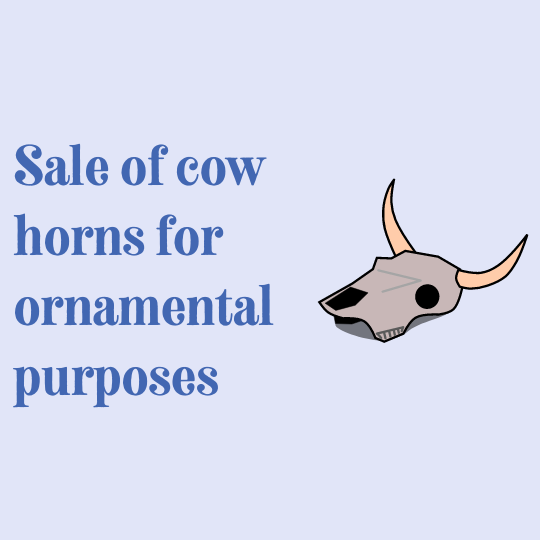
Cow horns, with their unique shape and texture, have long been used for ornamental and craft purposes.
They are sought after by artisans, craftsmen, and designers for creating a variety of products, including jewelry, buttons, combs, and decorative items.
By collecting and selling cow horns, cattle farmers tap into a niche market that values natural and sustainable materials. Establishing connections with artisans and craft enthusiasts allows farmers to directly sell these horns or partner with manufacturers who incorporate them into their creations.
This not only adds value to the cattle farming enterprise but also supports artisans and promotes the use of eco-friendly materials in various industries.
18. Agritourism and farm visits
Cattle farming isn’t just about the cows themselves; it’s also about sharing the agricultural experience with others.
One way to generate income while showcasing the beauty of your farm is through agritourism and farm visits. By opening your gates to visitors, you can provide an immersive and educational experience that appeals to both locals and tourists alike.
Imagine inviting families to your farm for a day of fun and learning. They can witness the daily operations of a working cattle farm, interact with friendly cows, and even participate in activities like milking demonstrations or feeding calves.
Additionally, you can offer hayrides, guided farm tours, or even host seasonal events such as pumpkin picking or holiday festivities. By charging an admission fee or offering package deals, you can generate revenue while creating lasting memories for your guests.
19. Educational programs and workshops on cattle farming
Cattle farming is a complex and fascinating industry, and there is a growing demand for knowledge and expertise in this field.
Capitalize on this by offering educational programs and workshops tailored to aspiring farmers, enthusiasts, or even urban dwellers curious about agriculture.
Consider hosting workshops on topics such as basic cattle husbandry, pasture management, or sustainable farming practices. Invite guest speakers, including veterinarians or experienced farmers, to share their insights and expertise. Hands-on activities, like learning how to handle and care for cattle, can further enhance the learning experience. By charging a fee for participation, you not only provide valuable knowledge but also create a revenue stream that taps into the growing interest in sustainable food systems.
20. Government programs, grants, and subsidies for cattle farming

Governments at various levels often recognize the importance of supporting the agricultural sector, including cattle farming. Explore the numerous government programs, grants, and subsidies available to farmers in your region.
For example, there might be grants or low-interest loans specifically aimed at expanding livestock operations, implementing sustainable practices, or investing in improved infrastructure.
Some governments also offer subsidies for specific activities like pasture management, manure management systems, or genetic improvement programs. These programs not only provide financial assistance but may also offer technical support and access to resources.
How to decide what type of animal you should raise
Consider your location, available resources, and market demand to determine the most suitable type of animal for your farm.
Assess your goals and preferences. This will help narrow down your options.
Look into factors such as growth rate, adaptability to your climate, maintenance requirements, and profitability.
If you’re interested in dairy farming, you might consider raising Holstein cows known for their high milk production.
Alternatively, if you prefer meat production, breeds like Angus or Hereford cattle are popular for their superior meat quality.
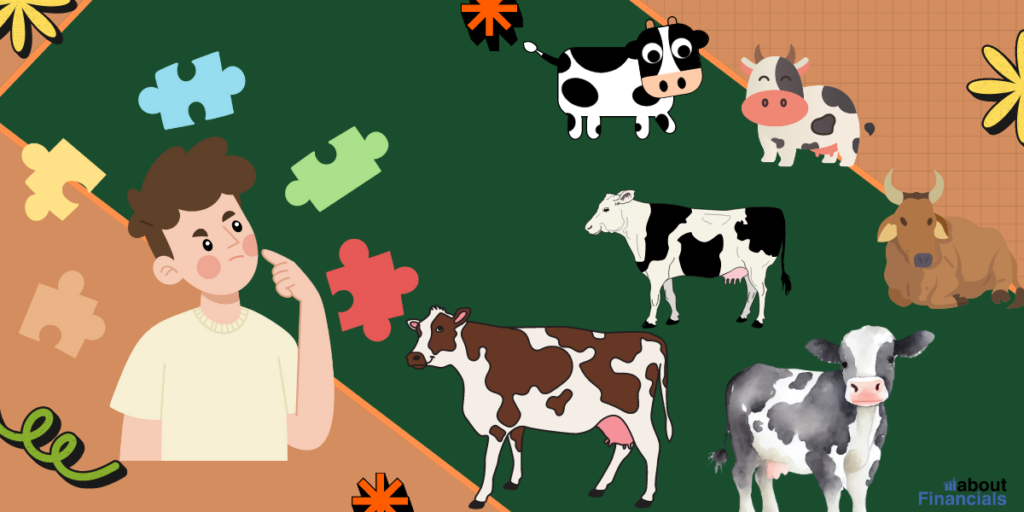
Some famous cattle breeds:
- Angus: Known for their marbled beef, Angus cattle are a popular choice for beef production due to their excellent meat quality.
- Holstein: Holsteins are a prominent breed in dairy farming, renowned for their high milk production. They are recognized by their distinctive black and white coloration.
- Hereford: Hereford cattle are versatile, known for their adaptability to various climates. They are commonly used for beef production and valued for their efficient feed conversion.
- Limousin: Originating from France, Limousin cattle are highly muscular and known for their lean meat. They are often favored in the beef industry.
- Brahman: Brahman cattle are primarily used for beef production but are also crossed with other breeds to improve heat tolerance and hardiness.
- Limousin: They have excellent feed efficiency and are sought after for their high meat yield and low fat content.
- Simmental: They are known for their large frame, rapid growth rate, and good milk production. Simmental beef is renowned for its flavor and tenderness.
- Charolais: They are primarily raised for beef production and are valued for their fast growth, high carcass yield, and lean meat quality. Charolais cattle are known for their white or creamy coat color.
Where to purchase your animals
Look for trusted and reputable sellers when purchasing animals for your farm. This can include established breeders, livestock auctions, or online platforms specializing in livestock sales. You can explore cattle auction and market reports to do your research.
Local breeders and farmers often have firsthand knowledge of the animals they raise and can provide valuable guidance. They may also be more familiar with the local climate and conditions, which can be beneficial for selecting animals suited to your specific area.
Moreover, talk to other farmers, livestock associations, or agricultural extension offices to gather recommendations on reliable sellers. Hearing from experienced individuals who have had positive experiences with certain sellers can help you make an informed decision.
Finally, various online platforms cater to livestock sales, allowing you to browse and purchase animals from different sellers. However, it’s important to exercise caution and research the credibility of the sellers before making any transactions.
How to do effective marketing of your cattle farm
Determine the specific market segment you want to cater to. Consider factors such as consumer preferences, geographical location, and demand for your specific type of animals or products.
Develop a strong brand identity for your farm that highlights the unique qualities of your animals or products.
Promote your animals through a combination of online and offline marketing channels. This can include creating a professional website, utilizing social media platforms, attending livestock shows and exhibitions, and networking with local farmers and buyers.
Highlight the desirable characteristics and attributes of your animals, such as superior genetics, health records, breed certifications, or exceptional performance records.
Explore value-added options such as offering additional services or products related to your animals. This can include selling breeding services, providing training or consultation, or offering specialty products made from animal by-products.
Final thoughts
Successfully raising and profiting from cattle farming requires careful consideration of various factors. From selecting the right type of animals to choosing the appropriate breeds, purchasing from reputable sources, and investing in necessary equipment, each aspect plays a crucial role in the overall success of your farming venture.
By combining these key elements and incorporating best practices, you can maximize your chances of profitability in livestock farming. Whether it’s through direct sales of meat, milk, or other products, or by diversifying your revenue streams with by-products, agritourism, or educational programs, the opportunities are vast in the world of livestock farming.

